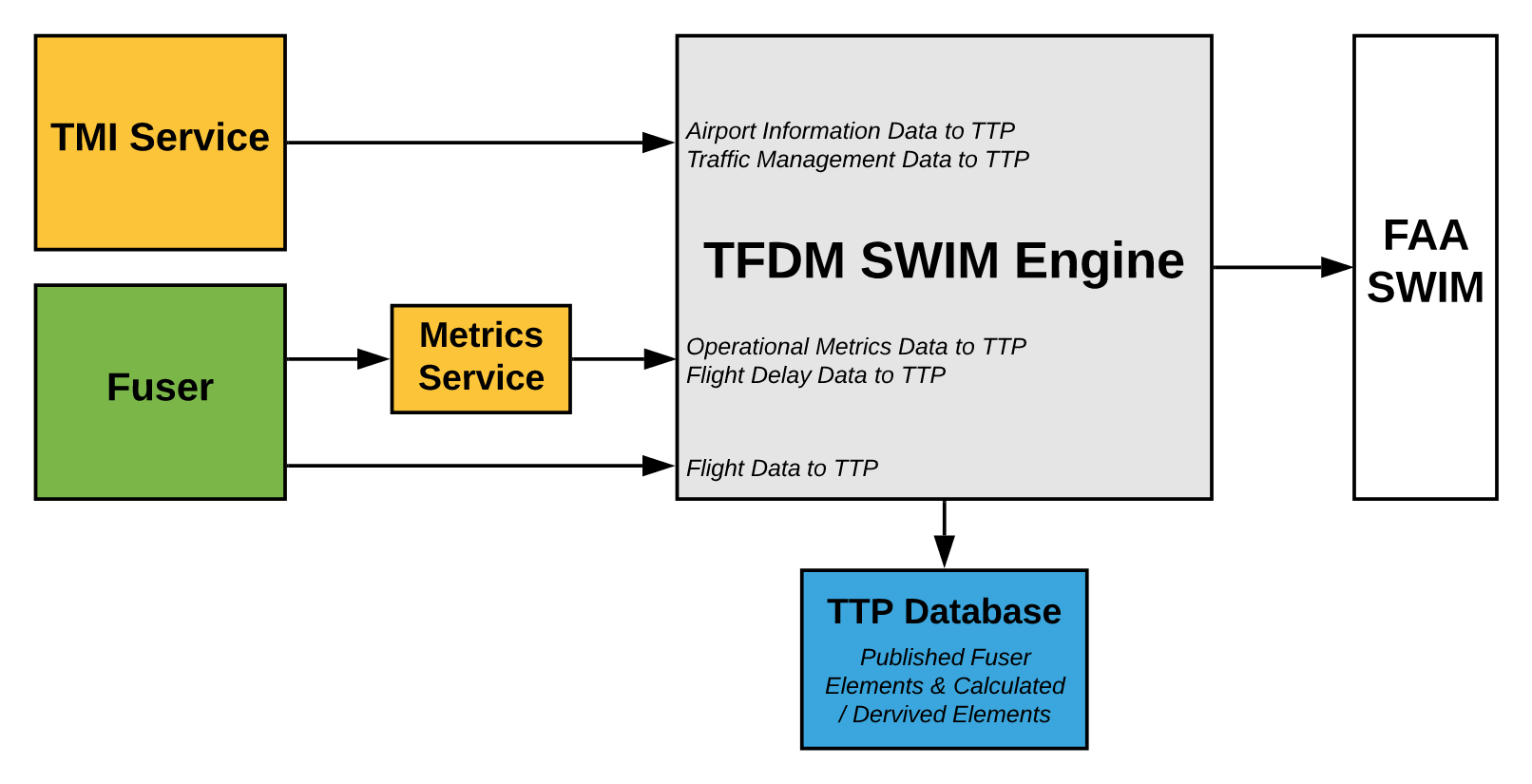 |
|
| The ATD-2 Poject delivered its final research transition package and was concluded on September 30, 2021. This page is being retained for reference and historical purposes, but the content is no longer being updated. |

ATD-2 Industry Workshop Documentation Outline / High Level Software Description Fuser Data ProcessingIntroductionThe purpose of the Fuser is to take data from multiple sources and merge them into a single flat file for each flight stored in a database for use by other systems. The result is a database containing the most up to date information for a single flight, all organized in a single file known as a Flight Object. To accomplish this, the Fuser utilizes multiple components which provide:
All of the data is stored in a single, common schema. The naming convention is a based on a flattened version of the Flight Object Data Dictionary (FODD). It was designed so that related elements are close together alphabetically. Each data element name consists of three parts:
Below is a table containing the mapping of the data sources used in ATD-2 into the Fuser. Data FlowData originates from external sources. These sources are shown on the left with the FAA sources of TFMS, STDDS, and TBFM in yellow. The Fuser can also connect to airline and 3rd party data when available which can be more accurate sources of certain types of data. Each of these data sources represents flight data in different formats. These raw message formats are transformed into flight formats that the Fuser can more easily process. The Fuser then merges flight data from these different data sources into a common flight format for the Fuser. The Fuser then sends fused update messages to STBO. STBO may add additional information to the flight, such as predicting the runway or taxi time. Updates from STBO are sent back to the Fuser . The Fuser then converts these updates back into the common flight format and merges the updates from STBO with any other updates it has received for the flight. The Fuser logs any flight changes it receives into the Fuser Databases. The Fuser also logs messages received from external data sources in separate tables for the purposes of traceability.
Data Source to Fuser Database MappingsPrior to being sent to the Fuser, data inputs are processed. Each processor is responsible for filtering out unwanted data, appending additional data already stored in the Fuser, retrieving the correct GUFI from the GUFI Service, and flattening the schema when needed. Below is a table containing the mappings between the output of the data Parsers into the common Fuser Format mappings (Fuser Database Mapping).
Fuser Database to NASA TFDM Terminal Publication (TTP) MappingsProviding external users access to the Fuser data is accomplished via the NASA TFDM Terminal Publication (TTP) SWIM data feed. This data feed is meant to provide an early access to the future TFDM system data which will become operational in 2020. Being a prototype version of the TFDM TTP feed, it is important to note that there may be differences between the NASA TTP feed and the future operational TFDM TTP data feed. When connected via the FAA SWIM network, external users are provided with a live stream of Fuser data packaged in product specific, XML formatted messages sets. The messages sets are based of the TFDM specification and a the transformation logic of the Fuser elements into the message sets are described per message set in the links below. Additional information on the NASA TTP such as message event triggers, differences between the NASA TTP and TFDM TTP, and other information can be found on the FAA NSRR.
+ Back to Top |

